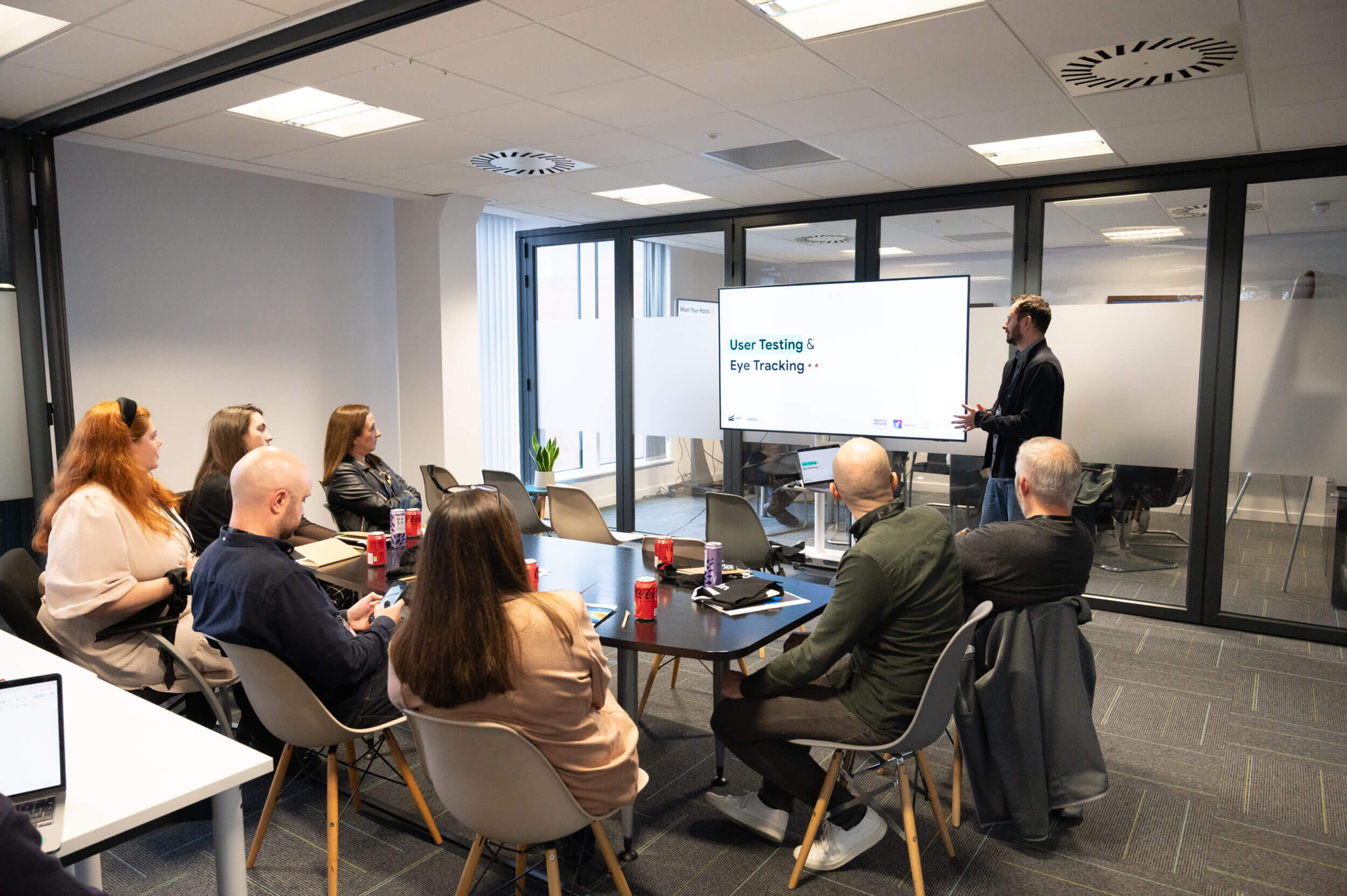Insights
What A Client Can Do To Help Make Onboarding A New Digital Agency A Smooth Process.
April 3, 2024

Written by:
Onboarding a new agency! It’s such an incredibly exciting time – energy is running high following the sales process, and everybody is keen to get started, but there can also be challenges too if not managed correctly.
Here at Uplift, we’re constantly reviewing and optimising our onboarding processes for new clients. We want that experience to be as smooth and seamless as possible, as it can be a pivotal moment for our team, the client, and for the future of the long-term partnership too. We’ve come to understand that a successful outcome is the result of the investment you put in early on in laying a stable foundation between both client and agency.
In this article, we’ll be sharing our insights on what we – as an agency – are looking to achieve during the onboarding process, in the hope that it might prove helpful for clients to see the considerations from the other side of the table! We’ll also be sharing some tips and tricks as to how you – as a client – can contribute to making the onboarding experience as seamless as possible. The clients that engage with the onboarding process and support our team, are undoubtedly the ones that help set up a successful partnership where our team can go on to exceed your goals and expectations.

Whether you’re a new client embarking on your first project with an agency, or a long-standing brand looking to make the transition from one agency to another, we hope this provides some valuable advice in how you can make the onboarding experience a delight for everyone involved!
What Is The Agency Looking For?
From our years of experience working with diverse clients across a wide range of industries, we’ve identified a list of key, universal considerations that are important to making any onboarding experience effective from our perspective. The list below covers the considerations and actions that we – as the agency – are looking for from new clients when we onboard. We’re sharing this in the hope that you – as a client – can understand a bit more about what your agency may be looking for!
- Understand Your Goals: One of the first thing we’ll do is meet with our New Business team to try and get as much information as possible about your goals. Our New Business team are great at getting an understanding of any aims or objectives you might have mentioned during your conversations with them, and this is like gold dust for our team. It gives us an insight into any problems you might have experienced before joining us, and what you might be looking to achieve during the partnership. It’s also great for us to understand early on if anything was promised or any commitments were made, just so we can ensure we’re meeting your expectations from Day 1!
- Reviewing The Contract and Summary of Work: Another exercise we’ll do early on is thoroughly review and examine the summary of work that has been agreed to with the wider team. This might contain any nuances or inclusions that you – as the client – have specified upon. We sometimes even run through this in person with clients, just so we can discuss it openly and get any additional context behind why certain things may have been specified. This ensures alignment between what was sold and what can be delivered, which helps to prevent any potential headaches further into the process!
- Introducing Our Team To The Client: Where possible, we like to arrange an in-person meeting so you can begin to meet the specialist team who will be working on your account. You may have already met many of the team during the sales process, but it’s great to arrange a big get-together and meet the people who you’ll be dealing with day-to-day. It’s also an opportunity for our team to meet your wider team too, and where possible, see your offices or location. We’ll normally try to incorporate a “brand immersion” or “product immersion” aspect to the day too, so our team can spend some time getting to know your business and product offering.
- Conduct Research: We’ll also ask our team to spend some time familiarising themselves with your brand and industry. This might include having a look through social media channels, using social listening tools to see what customers are saying about your brand online, or even subscribing to industry press so we can understand the big talking points within your sector. Of course, we also reach out to you as a client to ask you for any insights on market trends or changes too!
- Key Success Metrics: If you have key success metrics already, then fantastic! Our team will be looking to discuss these with you early on in the onboarding process. If you don’t however, we can work with you to try to map out some key metrics to measure success over the course of the partnership. Ultimately this comes down to what would you be looking to achieve, and what do we need to acheive in order to demonstrate that your investment in us has been a profitable exercise? It’s important to us as an agency that we can help set and understand clear benchmarks for evaluating the effectiveness of our efforts.
- Develop a Project Plan or Roadmap: It doesn’t matter if you’re a project client or a retained client! Either way we’ll create a detailed project plan or roadmap outlining the tasks, milestones, and deadlines associated with our strategy our project. We’ll also cover requirements and dependencies in detail too, so both parties understand if something is required by a certain date, so that blockers are identified well ahead of time. From our perspective as an agency, one of the key things we’re looking to do here is to establish a clear accountability plan, so that both parties leave the onboarding session knowing exactly what has to be provided for this roadmap to stay on track!
- Establish Communication Patterns: Your Project Manager or Account Manager will also discuss with you the pattern of communication that you’d prefer. Do you like weekly check-ins over email or fortnightly calls? Would you prefer a monthly meeting in-person or over video call? We try to find out early on in our onboarding process what kind of communication our clients are looking for, so that we know exactly you would best receive updates and provide feedback.
Of course, there’s a lot more that goes into our onboarding sessions, and each is unique; tailored specifically for each client and their particular needs. However, these are the universal considerations that tend to run across them all.

But What Can You Do As A Client?
This got us thinking then – what could clients do to help us achieve the above? We ended up putting together a list of actions or considerations that clients could bring to the table to make the to help make our dream onboarding process a reality.
- Provide Clear Expectations: One of the most things that a client could do – right out of the gate – is clearly communicate your goals and objectives for the project or strategy to the account or project manager. This helps to ensure alignment and set the right direction from the beginning. The more detail you can provide, the better! But don’t worry if it’s anecdotal and a bit rough around the edges either – any information you can provide about what you’re looking to achieve, what success means to you, and what we can do to make your life easier is all helpful. It sounds obvious, but writing it down can often help too – something about simply putting pen to paper often helps clients prioritise exactly what is important to them, and what is a “nice-to-have.”
- Be Available & Responsive: Clients who can make themselves available for regular check-in meetings or feedback sessions are an absolute dream! We do understand though that this simply isn’t always possible. Clients are busy, and you have your own businesses to focus on – we completely appreciate that sometimes the meeting with the agency will have to get delayed, and thats fine! We’re happy to work around you as best we can, but there’s no doubt about it that those clients who can block out a regular time slot in their diary to update the agency, provide feedback and direction, and be involved in the collaboration process see better results.
- Allocate Necessary Resource: There’s nothing quite so awkward as when the client is the one holding up progress on a project or account! Where possible we try to provide as much clarity ahead of time if a dependency is sat with you as the client; any good agency will make it really clear to you what is needed, and by when. Clients that are able dedicate a bit of time to providing what the agency requires – whether that be necessary resources, information, logins, or files really do help facilitate the smooth execution of the strategy or project.
- Participate in the Research Phase: Every agency absolutely adores it when a client actively engages in the research phase by providing insights into their business, industry, target audience, and competitors. Our team are incredibly excited to learn more about your business and your product, so any information you can share just feeds that enthusiasm!
- Respect Budget & Timeline Constraints: This is a tricky one! We understand that no client wants to wait for something to be delivered, or to hear that something is out of scope. As an agency that’s our absolute last resort. If we can find a way to squeeze it into the schedule, we will! If there’s a way we can move time around to ensure we can complete this particular task for you within budget, we will! However, in the rare circumstance that we do have to communicate to you – the client – that a particular task might be out of budget or might need to wait a little while to be completed, any grace or patience extended to the team is always repaid a hundredfold later on! Clients that are realistic about expectations and understand the impact of scope changes or delays on project outcomes and costs, are always those clients that the team are personally invested in, and want to go out of their way to achieve success for.
- Provide Constructive Feedback: We totally understand that not everything is going to be perfect first time around – particularly if you’re a new client that we’ve just started working with! It’ll take us a little while to figure out the kind of thing you love, and what you might not be so keen on. Clients that offer constructive feedback throughout the project or strategy, really do help the agency to understand what is working well and where improvements can be made. Don’t worry, we’re not shy, we can take the feedback! Those clients that can be more specific and provide clear, actionable suggestions really do make our lives much easier! Saying “It needs to pop” to a designer is their worst nightmare, but saying “We need it to showcase this product more” is far more helpful!
- Keep Onboarding: Remember, onboarding is not just a one-time event either —it’s an ongoing journey of collaboration and learning. The best clients make an ongoing commitment to upskilling the agency in their sector or field. Your business, your product, and your industry is constantly evolving, so keeping your agency involved as your business progress is key to their long-term success.
So there you are! We hope you’ve found these insights and considerations valuable in understanding the crucial role that clients can play in making the onboarding process a success. At Uplift, we’re committed to fostering collaborative and successful partnerships with our clients, and effective onboarding is just the beginning. By embracing open communication and regular engagement, we can lay the best possible foundations to deliver success for you.





